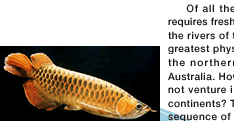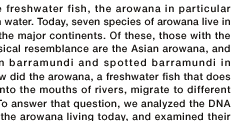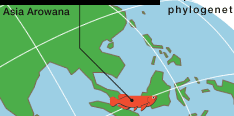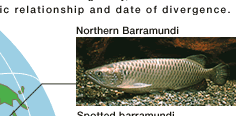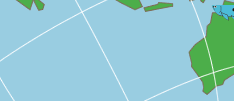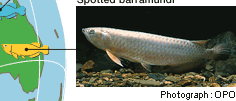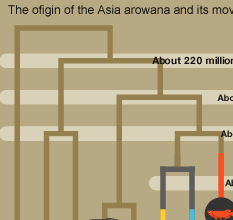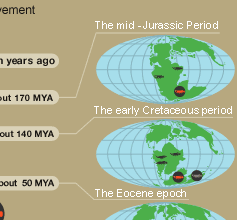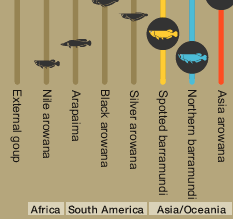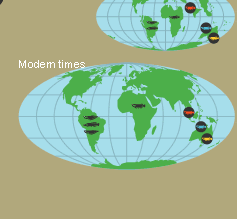According to the analysis data for the DNA sequence, the Asian and Australian arowana diverged about 140 million years ago, much longer ago than the time assumed based on the similarities of form. At that time, the land masses of India and Madagascar, both part of the Gondwana supercontinent, broke off from the Antarctic land mass and began to drift north. Later, the Indian subcontinent continued to drift northward and collided with the Eurasian continent.
& If the ancestors of the Asia arowana rode on the Indian subcontinent and were taken to Southeast Asia, it would explain without contradiction the period in which the arowana diverged, the geological history of the continental drift, and their requirement for fresh water. This is how the history of the arowana's origin and movement can be explained based on objective data.
|
